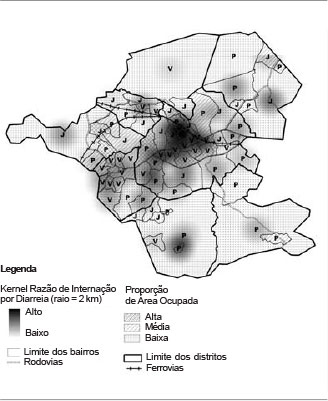Every child had an average of three episodes of diarrhea per year in developing countries in the twentieth century. The decrease of the number of deaths due to diarrhea in Brazil was more closely related to the use of control techniques than to changes in lifestyle conditions. This article seeks to analyze the spatial distribution of morbidity due to diarrhea among children and its relation with lifestyle conditions. This was an ecological study, with the suburbs of the city of Itaborai as units of analysis. The population studied was the number of hospitalizations of children < 5 years for diarrhea between 2006 and 2009, available in Hospital Information Systems. The Diarrhea Hospitalization Ratio (DHR) indicator and Composite Lifestyle Quality (CLQ) indicator were established. Diarrhea still accounts for a large number of hospitalizations of children (15.5% between 2006 and 2009). The DHR was high in this period (69.7 hospitalizations/ 1.000 NV). The spatial analysis identified that the suburbs with the highest DHR were, in most cases, those with the highest population agglomerations and better lifestyle conditions.
Diarrhea; Hospitalization; Hospital Information Systems; Social conditions





